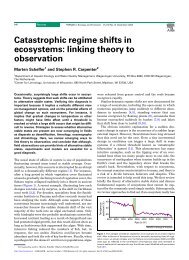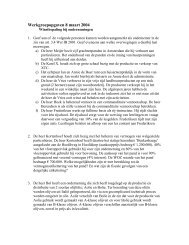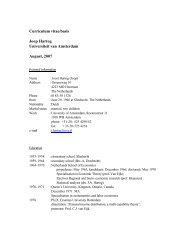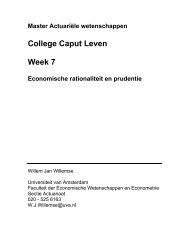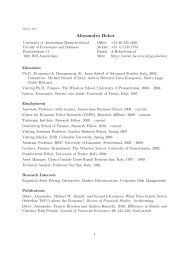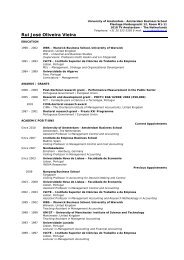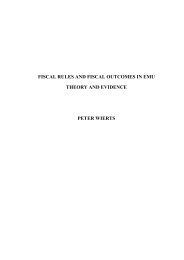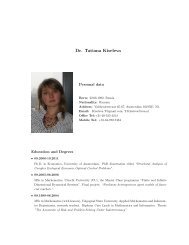A meta-analytically derived nomological network of procrastination
A meta-analytically derived nomological network of procrastination
A meta-analytically derived nomological network of procrastination
You also want an ePaper? Increase the reach of your titles
YUMPU automatically turns print PDFs into web optimized ePapers that Google loves.
1406 W. van Eerde / Personality and Individual Differences 35 (2003) 1401–1418<br />
5. Affect: (a) state anxiety, including test anxiety and agitation;(b) depression, including<br />
dejection.<br />
6. Performance: self-reports or independent measures <strong>of</strong> (a) whether a deadline was missed or<br />
not;(b) how much time was spent on preparing a task;(c) how much time was spent on<br />
performing a task, such as an assignment;(d) grades obtained in a specific course;and (e)<br />
grade point average.<br />
2.3. Integration <strong>of</strong> effect sizes<br />
The Rosenthal (1978, 1991) <strong>meta</strong>-analytic procedures were used to compare and combine<br />
the effect sizes (for a comparison with two other <strong>meta</strong>-analytic approaches, see Johnson,<br />
Mullen, & Salas, 1995). The correlations were transformed to Fisher’s zs and multiplied by<br />
their degrees <strong>of</strong> freedom (n 3). These weighted Fisher’s zs were summed across studies within<br />
each effect category and divided by the total degrees <strong>of</strong> freedom in the category to obtain the<br />
average weighted Fisher’s z <strong>of</strong> each effect category. This Fisher’s z was transformed back into<br />
r to obtain the weighted mean correlation for the effect category, and 95% confidence intervals<br />
were computed for the weighted means. Subsequently, the w 2 for homogeneity <strong>of</strong> results<br />
was computed within each effect category (Hedges & Olkin, 1985;Rosenthal, 1991) to establish<br />
whether the findings can be interpreted as belonging to the same population <strong>of</strong> effect<br />
sizes.<br />
3. Results<br />
After examination <strong>of</strong> the articles, the selection described above resulted in 88 articles, given in<br />
the Appendix, from which I retrieved the effect sizes <strong>of</strong> 121 independent samples, with a total <strong>of</strong><br />
18,196 subjects. Sample sizes in the studies ranged from 32 to 618, with an average <strong>of</strong> 172. The<br />
percentage <strong>of</strong> women in the samples ranged between 0 and 100%, with an average <strong>of</strong> 84%, indicating<br />
that women were overrepresented in the studies.<br />
The total range <strong>of</strong> ages in the samples ran from 16 to 43. In 60 samples, the age <strong>of</strong> the samples<br />
was reported as mean or median. Averaging these statistics in the 60 samples resulted in a mean<br />
age <strong>of</strong> 23, which indicates that the participants were relatively young.<br />
The type <strong>of</strong> participants was recorded, to obtain an impression <strong>of</strong> their identity: 60 samples<br />
consisted <strong>of</strong> college psychology students;29 were identified as college students with other majors<br />
than psychology;seven <strong>of</strong> the samples included (high) school children;six contained non-student<br />
adults;and in three samples the identity was not reported.<br />
Many studies only mentioned one effect size, so that many <strong>of</strong> the categories contained<br />
few correlations. The number <strong>of</strong> studies (k), total sample size per category, the average<br />
results <strong>of</strong> each category weighted by the degrees <strong>of</strong> freedom <strong>of</strong> the total sample size in that<br />
category, the 95% confidence interval around the average, and the homogeneity <strong>of</strong> the<br />
findings, tested using a w 2 test, are presented in Table 1. The effect sizes can be considered<br />
to be significantly different from zero when the confidence interval does not include the<br />
zero.




